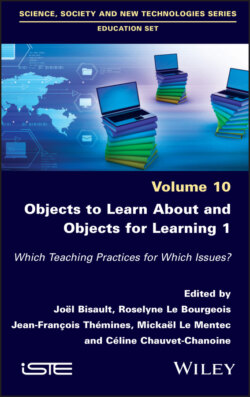Читать книгу Objects to Learn about and Objects for Learning 1 - Группа авторов - Страница 30
I.3. Conclusion and perspectives
ОглавлениеThe characterization of school objects presented in the first part of this introduction and the didactic and curricular problematization proposed in the second part draw attention to the diversity and richness of the points of view on school objects and their function for teaching and learning. It is a proposal for a cross-reading of the various texts that follow in order to examine the relationships between “objects” and “teaching practices”. For these perspectives, three lines of questioning are proposed.
The first concerns the evidence of the presence of objects to learn about and objects for learning in teaching–learning situations at all levels of teaching and training. However, this presence, and more precisely this existence, is not automatic. In this respect, a number of texts underline the pupils’ difficulties in connection with the different functions of the same objects depending on the spaces of socialization and depending on the subjects or disciplines. This is the case with everyday objects such as chairs which are not spontaneously associated with learning in the plastic arts. In order to mitigate this tacit contrast in the functions of school objects or schoolified objects, texts suggest the design and creation by the pupils of such hybrid objects, for example children’s literature picture books, geography maps or didactic posters. This first line of questioning looks at the “familiarity regime” – to borrow the concept from Thévenot (2006) – which makes it possible to explore and consider the pupils’ bonds with their close environment in which objects abound.
The second line of questioning, which is not totally unconnected with the first, stems from current oppositions between known and unknown, familiar and foreign, simple and compound, even concrete and abstract. As early as 1985, Martinand drew attention to these pairs which are often talked about but which mask the obstacles that they are liable to present. For instance, he examines the differences between a drawing of a rabbit’s digestive tract and a photograph of its viscera in order to discuss the concrete/abstract pairing. Making reference to Bachelard, he says: “The problems of the ‘abstract’ and the ‘concrete’ must be linked to reference practices: the concrete is only the familiar in one reference practice and often remains the abstract for another” (p. 59). Similarly, he also marks the nuances between a semiconductor diode and its characteristics while differentiating the material object and its models (Martinand 1994). In the same vein, Bisault (2011), taking as an example the balloon in kindergarten, underlines the transition from a familiar object to the outline of a scientific object or concept-object. This suggests a critical distancing and a progressive detachment of pupils and teachers from the materiality of the objects with which, for which and on which they are working.
The third and final point concerns the functions assigned to objects in the teaching–learning process. The texts collected in this work highlight the function of ritual, resources, motivation, representation, enunciation, guidance, support and assessment, and the support of objects and artifacts in learning. The discussions in these chapters invite investigation of the relationship between objects to learn about and content to learn, in a foreign language, in physics, in geography and in the schooling of kindergarten and elementary school, junior and senior high school. A cross-reading of these texts reveals the need to train teachers in the use of objects and therefore of their instruments to teach and bring about learning.
Finally, in these few concluding sentences, there must be a mention of interruptions and emergencies. In fact, the COVID-19 pandemic (2020–2021), which has compelled a proliferation of remote learning and thus of screens, questions the genesis, the invention of new objects to learn about and for learning associated with this pedagogical technology. Correspondingly, taking charge of new objects, in particular social networks, is becoming an urgent requirement in education. These perspectives are proposals for renewing and updating the theme of “didactic engineering” and the invention or inventiveness of researchers and practitioners (Rouchier et al. 2001).
